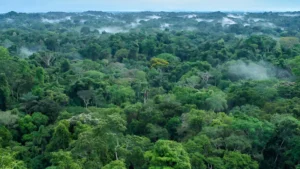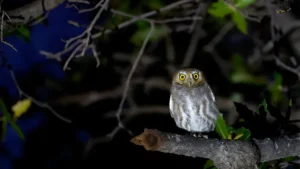7 Powerful Ways Bamboo Forest Restoration Boosts Biodiversity
- August 20, 2024
- 0 comment
Bamboo forests, often celebrated for their rapid growth and sustainability, play a crucial role in preserving and enhancing biodiversity. While these forests are primarily known for their utility in construction, textiles, and even cuisine, their environmental impact is profound.

Bamboo is a keystone species in many ecosystems, meaning its presence and health have a significant impact on the surrounding flora and fauna. As human activities continue to degrade natural habitats, bamboo forest restoration has emerged as a potent strategy to revive and sustain biodiversity.
List of 7 Bamboo Forest Restoration:
- Habitat Creation for Endangered Species
- Soil Stabilization and Erosion Prevention
- Carbon Sequestration and Climate Regulation
- Supporting Pollinators and Plant Diversity
- Water Cycle Regulation and Hydration of Ecosystems
- Enhancing Local Livelihoods and Reducing Human Impact
- Creating Corridors for Wildlife Migration
The Role of Bamboo in Ecosystems
Bamboo is often referred to as the “green gold” of nature, not only because of its economic value but also due to its environmental significance. It is one of the fastest-growing plants on Earth, with some species capable of growing up to three feet in just 24 hours. This rapid growth allows bamboo to quickly stabilize soil, prevent erosion, and create habitats for a wide range of species.
Moreover, bamboo’s extensive root system helps in water retention and soil fertility, making it an excellent plant for reforestation and land rehabilitation projects. Its ability to thrive in diverse climates and conditions also means that it can be used in various regions around the world to restore degraded lands.
1. Habitat Creation for Endangered Species
One of the most immediate benefits of bamboo forest restoration is the creation of habitats for a variety of species, particularly those that are endangered. For example, the giant panda, one of the world’s most iconic endangered species, relies almost entirely on bamboo for its diet and habitat. Restoring bamboo forests in regions where these pandas live is crucial for their survival.

Beyond pandas, bamboo forests provide shelter and food for many other species, including red pandas, certain species of lemurs, and numerous bird species. By restoring these forests, we are not just planting trees; we are rebuilding homes for countless creatures that rely on this unique ecosystem.
2. Soil Stabilization and Erosion Prevention
Bamboo’s extensive and fibrous root system plays a crucial role in stabilizing soil and preventing erosion. This is particularly important in areas that have been deforested or degraded due to agriculture, logging, or other human activities. When bamboo is planted in these areas, its roots quickly bind the soil together, reducing the risk of landslides and erosion.

Soil stabilization is not only important for preventing physical damage to the land but also for maintaining the health of the ecosystem. Erosion can strip the soil of its nutrients, making it difficult for plants to grow. By preventing erosion, bamboo helps to maintain the fertility of the soil, which in turn supports a wider variety of plant and animal life.
3. Carbon Sequestration and Climate Regulation
Bamboo forests play a significant role in carbon sequestration, the process of capturing and storing atmospheric carbon dioxide. This is crucial in the fight against climate change, as excess carbon dioxide in the atmosphere is a leading cause of global warming. Bamboo is particularly effective at this because of its rapid growth rate and the large amount of biomass it produces.

As bamboo grows, it absorbs carbon dioxide from the atmosphere and stores it in its stems, roots, and leaves. A mature bamboo forest can sequester more carbon than a similarly sized forest of trees, making it an invaluable tool in climate regulation efforts. By restoring bamboo forests, we not only help to mitigate the effects of climate change but also create a healthier environment for all living beings.
4. Supporting Pollinators and Plant Diversity
Bamboo forests are home to a diverse range of plant species, many of which are dependent on the bamboo ecosystem for their survival. In turn, these plants attract a variety of pollinators, such as bees, butterflies, and birds. Pollinators are essential for the reproduction of flowering plants, and their presence is a key indicator of a healthy ecosystem.

The restoration of bamboo forests can lead to an increase in plant diversity, as the stable environment provided by bamboo allows other plant species to thrive. This, in turn, supports a greater variety of pollinators, which helps to maintain the overall health of the ecosystem. In areas where pollinator populations are declining, bamboo forest restoration can be a vital step in reversing this trend and preserving biodiversity.
5. Water Cycle Regulation and Hydration of Ecosystems
Bamboo plays an essential role in the water cycle by regulating water flow and improving water retention in the soil. In regions where deforestation has led to a disruption in the natural water cycle, bamboo forest restoration can help to restore balance. The dense root system of bamboo acts like a sponge, absorbing water during heavy rains and slowly releasing it during dry periods.

This regulation of the water cycle helps to prevent both flooding and drought, creating a more stable environment for plants and animals. Additionally, bamboo forests can improve the quality of the water in their vicinity by filtering out pollutants and reducing sediment runoff. This leads to cleaner rivers and streams, which benefits both aquatic life and the communities that rely on these water sources.
6. Enhancing Local Livelihoods and Reducing Human Impact
Restoring bamboo forests not only benefits the environment but also has significant social and economic impacts. Bamboo is a versatile resource that can be used in a wide range of products, from construction materials to textiles, paper, and even food. In many parts of the world, bamboo is an important source of income for local communities.

By promoting sustainable bamboo farming and restoration, we can help to create jobs and improve livelihoods in rural areas. This, in turn, reduces the pressure on natural forests, as communities have a sustainable alternative to activities like logging and slash-and-burn agriculture. When local people are able to benefit economically from bamboo forests, they have a greater incentive to protect and restore these ecosystems, which leads to a positive cycle of conservation and sustainable development.
7. Creating Corridors for Wildlife Migration
One of the challenges in biodiversity conservation is the fragmentation of habitats, which can isolate populations of species and reduce genetic diversity. Bamboo forest restoration can help to address this issue by creating corridors that connect fragmented habitats. These corridors allow animals to move more freely between different areas, which is essential for finding food, mates, and new territories.

For species that are particularly sensitive to habitat fragmentation, such as large mammals and certain bird species, these corridors can be a lifeline. They help to maintain healthy populations by ensuring that individuals can mix and breed with others from different areas, which increases genetic diversity and resilience. Bamboo forests, with their dense and fast-growing nature, are particularly well-suited for this purpose.
Final Conclusion
Bamboo forest restoration is a powerful tool in the fight to preserve and enhance biodiversity. By creating habitats for endangered species, stabilizing soil, sequestering carbon, supporting pollinators, regulating the water cycle, enhancing local livelihoods, and creating wildlife corridors, bamboo plays a crucial role in maintaining the health of our planet’s ecosystems.
As we continue to face the challenges of climate change, habitat loss, and declining biodiversity, it is more important than ever to recognize and promote the benefits of bamboo forest restoration. By investing in these efforts, we can help to build a more sustainable and biodiverse future for all living beings.
Frequently Asked Questions (FAQs)
- How does bamboo forest restoration contribute to climate change mitigation?
Bamboo forest restoration contributes to climate change mitigation by sequestering large amounts of carbon dioxide from the atmosphere. Due to its rapid growth rate, bamboo absorbs more carbon than many other types of vegetation, making it an effective tool in reducing greenhouse gas levels. - Can bamboo forest restoration help in soil conservation?
Yes, bamboo’s extensive root system binds the soil, preventing erosion and landslides. This is especially important in degraded areas where soil conservation is needed to restore fertility and promote the growth of other plants. - What role do bamboo forests play in water cycle regulation?
Bamboo forests regulate the water cycle by improving soil water retention and preventing both floods and droughts. The root systems absorb excess water during rains and release it gradually, ensuring a stable water supply to surrounding ecosystems. - Why is bamboo considered a keystone species?
Bamboo is considered a keystone species because its presence and health significantly impact the surrounding ecosystem. It supports a wide range of species, from endangered animals to various plants and pollinators, making it vital for maintaining biodiversity. - How does bamboo forest restoration benefit local communities?
Bamboo forest restoration provides economic benefits by creating sustainable livelihoods. Bamboo can be harvested for various products, reducing the need for harmful practices like logging and slash-and-burn agriculture, thus promoting environmental conservation. - Can bamboo forests support endangered species?
Yes, bamboo forests provide essential habitats for endangered species like the giant panda and red panda. Restoring these forests is crucial for the survival of these species, as they rely on bamboo for both food and shelter.

Evan Bennett
Forestry AuthorEvan Bennett brings over a decade of expertise in forestry wildlife management to the forefront, specializing in habitat conservation, biodiversity, and human-wildlife interaction. Evan's work ensures harmonious coexistence between wildlife and human communities through effective and sustainable practices. Continuously engaging in research and workshops, Evan stays at the cutting edge of wildlife management advancements. As a trusted advisor and contributor to leading environmental journals, Evan is dedicated to preserving the natural world for future generations.










Leave your comment